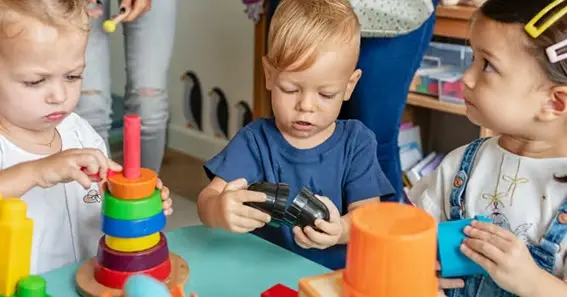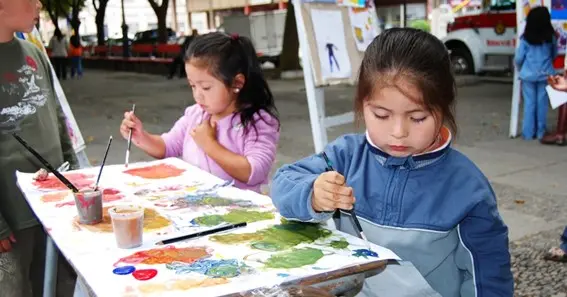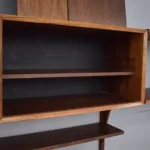What is parallel play? Parallel play is a stage in early childhood where children play near each other but do not directly interact. Early childhood development involves parallel play. Kids play close together without communicating. This stage, usually between 2 and 3, is crucial for cognitive and social development. Parallel play is when youngsters do the same thing independently. This play helps them grow in numerous ways. Understanding parallel play helps caregivers and instructors support children’s growth and establish a safe learning environment. In this article we discuss about what is parallel play and more about it.
What Is Parallel Play?
Parallel play is a stage in early childhood where children play near each other but do not directly interact. Parallel play involves youngsters doing tasks together without talking. It usually begins about age two and continues until the child is ready for more complex play, like associative and cooperative play. Parallel play involves youngsters using the same toys and tasks but doing them independently. Two kids sitting next to each other may build towers with blocks.
This type of play can involve direct communication or coordination among kids. Instead, it would help if you experimented on your own. Children who play in parallel may watch or copy each other, but they rarely work together or toward the same goal.
Important Information Regarding Multi-Game Play

Parallel play, where kids perform things without communicating, is crucial to development. Understanding this stage will help you understand how youngsters learn to get along and think critically. After know what is parallel play, you should know this about this crucial kid development period.
Development Importance
Playing with others helps young toddlers flourish. As long as they don’t talk, they connect with their surroundings and peers. This step is crucial because it signals the transition from playing alone to playing alongside others. It teaches youngsters social skills and norms for future interactions. This period helps kids get along with others and adjust to sharing space and possessions.
Improvement In Social Skills
If you already read what is parallel play, you should know parallel play helps kids learn social skills, even though it may seem lonely. Understanding and following their peers’ activities helps kids develop empathy and social awareness. They may watch other youngsters play with toys, solve issues, or express themselves. Kids learn social cues and play styles by watching others. This prepares children for more complex social settings. Parallel play lets kids see their friends without immediately interacting or working together.
Growing Smarter
Parallel play helps kids explore and try new things, which boosts brain growth. Playing together helps kids make decisions and solve difficulties. They learn to create, play with toys, and solve simple problems independently. Exploring their own improves creativity and self-confidence as kids learn to trust their skills and tastes. Parallel play helps kids learn cognitive skills for more arduous occupations and social settings.
Emotions Grow
Children learn how to regulate their emotions in social situations while playing. Playing with others helps kids manage their emotions, anger, and relationships. They may feel happy, angry, or envious when moving around their play space. This emotional activity helps groups rebuild resilience and adapt to new challenges. Kids learn to understand and control their emotions, making socializing more straightforward.
Making Parallel Play Possible

Add toys and activities to entertain the room and encourage kids to play together. Create play places where kids can play together, and adults will assist them in adjusting to having pals. Giving kids lots of chances to play together enables them to learn social skills without stress. Adults can model good behavior and praise them to help kids feel comfortable and confident in social situations.
Monitoring Others’ Behavior
If you know what is parallel play, you must know parallel play enables kids to observe and learn from each other. While playing together, youngsters can see others fix difficulties, play with their toys, and engage with their surroundings. Watching others teaches kids new abilities. Their play can incorporate these new abilities and techniques. It also lets you practice and repair faults. A child may try to mimic a friend’s block-based construction method.
Moving To Interactive Play
Parallel play progresses to associative and cooperative play. As they improve at playing alone, kids gain cooperative play abilities. Similar to associative play, youngsters share toys or thoughts. Learn more about cooperative play. Cooperative play involves kids building a massive construction or playing a game with rules. The shift from playing alone to with others indicates more teamwork and socialization.
Actions Of Grownups
Adults must assist and mentor kids while playing. Adults help kids learn complicated social play skills by creating a safe and compassionate environment. Adults can assist kids in playing together by providing play areas and engaging items nearby. Positive praise and moderate direction can help kids feel comfortable around peers and try new play.
Conclusion
Parallel play helps children acquire sophisticated social skills in early infancy. It offers incredible mental, physical, and social health opportunities. Playing with others teaches kids how to go about, enhance their skills, and get used to having friends. This stage is part of growing up and sets the stage for future partnerships. In above we discuss about what is parallel play and explore more about it.
FAQ
Why Utilize Parallel Play?
Parallel play helps kids explore their surroundings, improve their social and cognitive skills, and adjust to having pals.
What Age Is Too Young To Start Playing With Other Kids?
Parallel play begins typically between 2 and 3 years. It is crucial to early development.
Can Adults Help Kids Play Together?
Adults can promote parallel play via positive reinforcement, exciting play settings, and encouraging youngsters to play together.
Does Parallel Play Indicate Social Issues?
Playing with other kids is natural and doesn’t always indicate social issues. It precedes more complex play.
When Does A Game Become More Complicated?
Between 3 and 4, youngsters switch from playing alone to playing with others because they develop confidence and experience.
Sources:
https://en.wikipedia.org/wiki/Parallel_play
https://study.com/academy/lesson/parallel-play-in-child-development-definition-examples.html










